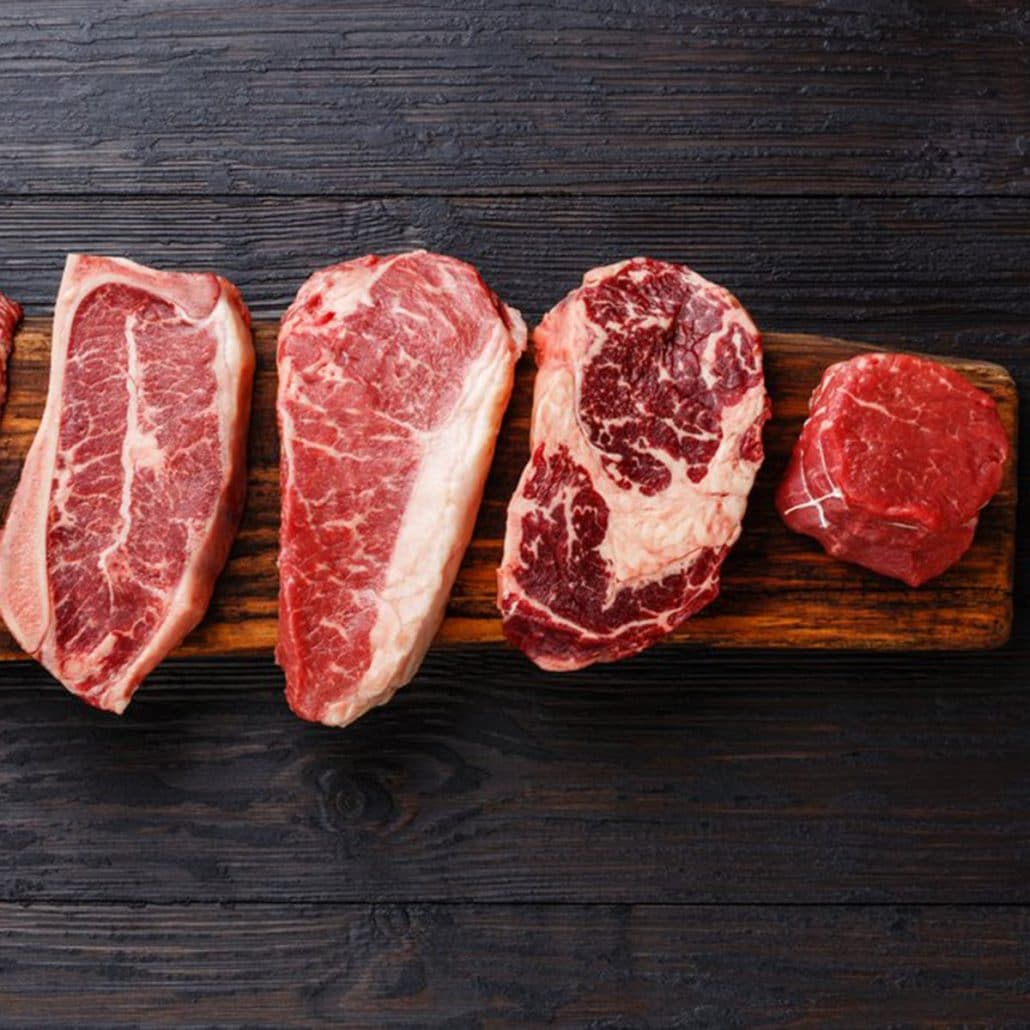Many studies confirm that the nutrients composition in beef can vary depending on what cows eat.
According to Dr. Dale Woerner, assistant professor with the Center for Meat Safety & Quality at Colorado State University, 97 percent of the beef produced in the U.S. is grain-fed feedlot beef, while the other 3 percent is grass-fed.
So, the question becomes, does the way cows are fed makes any difference to your health.
In this article we will look at the evidence to determine the differences between grass- and grain-fed beef and how it affect you.
The difference between grass- and grain-fed cattle
In the United States, most cows start living similar lives.
The calves are born in the early spring, drink milk from their mothers, and are then allowed to roam free and eat grass or other edible plants they find in their environment.
This continues for about 7 to 9 months. After that, most conventionally raised cows are moved to feedlots.
Large feedlots are called concentrated animal feeding operations (CAFOs). There, the cows are kept in confined stalls, often with limited space.
They are rapidly fattened with grain-based feeds that are usually made from a base of soy or corn. Typically, their diet is also supplemented with small amounts of dried grass.
The cows live in these feedlots for a few months before being brought to a slaughterhouse.
Of course, it’s not that simple. The different feeding practices are complicated and varied.
For example, grass-fed beef in other countries may not be directly comparable to US products, and grass-fed beef isn’t necessarily pasture-raised. Not all grass-fed cows can graze outdoors.
In fact, the term grass-fed isn’t clearly defined.
That said, grass-fed cows eat (mostly) grass, while grain-fed cows eat (mostly) an unnatural diet based on corn and soy during the latter part of their lives.
To maximize growth, the cows are often given drugs, such as antibiotics and growth hormones.
The difference in the fatty acid composition
What a cow eats can significantly affect the nutrient composition of its beef. This is particularly evident when it comes to fatty acid composition.
Grass-fed beef usually contains less total fat than grain-fed beef, which means that gram for gram, grass-fed beef contains fewer calories. (1)
However, the composition of fatty acids is also different:
- Monounsaturated fat. Grass-fed beef contains much less monounsaturated fat than grain-fed beef. (2)
- Omega-6 polyunsaturated fats. Grass- and grain-fed beef contain very similar amounts of omega-6 fatty acids.
- Omega-3s. This is where grass-fed makes a major difference, containing up to five times as much omega-3 fatty acids.(3)
- Conjugated linoleic acid (CLA). Grass-fed beef contains about twice as much CLA as grain-fed beef. This fatty acid is associated with a number of health benefits. (4, 5)
In short, there are some significant differences in the composition and amount of fat in grass- and grain-fed beef.
Additionally, the breed and cut of meat considerably affect the fat composition of beef as well. (6)
Grass-fed beef is more nutrient dense
Both grain- and grass-fed beef are highly concentrated sources of nutrients.
Beef is loaded with vitamin B12, B3, and B6. It’s also rich in highly bioavailable iron, selenium, and zinc. In fact, meat contains almost every nutrient that you need to survive (7).
It also contains high quality protein and various lesser-known nutrients, such as creatine and carnosine, which are very important for your muscles and brain.
But even though the difference isn’t great, grass-fed beef generally contains higher amounts of certain nutrients.
Compared with grain-fed beef, grass-fed is much higher in the following vitamins:
- Vitamin A: Grass-fed beef contains carotenoid precursors to vitamin A, such as beta carotene.
- Vitamin E: This antioxidant sits in your cell membranes and protects them from oxidation. (8)
Grass-fed beef also tends to be richer in other antioxidants. (9, 10)
Grass-fed beef expense and convenient factors
It’s important to keep in mind that even conventional, grain-fed beef is very nutritious.
As long as you don’t overcook your beef , which may lead to the formation of harmful compounds, it’s a nutritious food that can be part of a healthy diet.
In the United States, grass-fed beef can be more expensive, which may shy some people away from purchasing it.
Depending on where you live, it may also be inconvenient to buy grass-fed beef.
While some people may live close to a farmer’s market or whole foods store, others may need to drive long distances to find grass-fed beef.
There can also be subtle differences in taste. Grass-fed beef is often leaner and may have a different texture.
And, although I personally prefer gras-fed beef over conventional grain-fed beef, In the end, the choice depends on your preferences and ideals.


